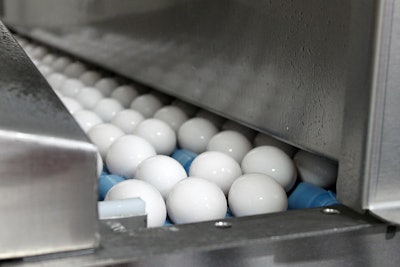
Because the US egg industry runs on small profit margins, understanding each input cost is important to the profitability of the egg market. Therefore, the EIC (Egg Industry Center) conducted a survey and published a report estimating the PCT (processing, cartoning, and transportation) costs for 2020 in the US egg industry.
The survey contained seven questions about egg type, packaging type, case type, and miscellaneous.
Four different shell egg categories were included in the survey: graded nest eggs sourced in-line, graded nest eggs sourced off-line, graded loose eggs large, and graded loose eggs extra-large.
Five different types of packaging were included in the survey: 12-pack cartons, 18-pack cartons, twin 18-packs (36 eggs), 5 dozen packs, and filler flats.
Three types of transportation were included in the survey: delivering eggs to a warehouse, picking eggs up from a warehouse, and delivering eggs to the store door.
Two types of cases were included in the survey: regular corrugated cardboard cases and reusable plastic cases.
Responses were received from 16 companies (who collectively process eggs from approximately 80 million layers in the U.S.). The findings of the study are limited by the low number of responses in certain categories, which made regional costs hard to estimate. Therefore, not every variable was able to be reported on.
Total PCT costs
In the study, the egg processors explained that the main factor of the PCT cost is the grade yield cost calculation. Grade yield loss was defined as the sum of the losses for all eggs received that are of lower value, such as smaller sizes or undergrades, and the gain for the eggs received that are of higher value such as larger size eggs. “This calculation is dependent on the differences between the prices of the eggs of different classes and sizes with respect to the price of grade A large white eggs,” stated the study.
The study found that the estimated PCT costs of processing graded nest eggs sourced in-line was 38.66 cents eggs per dozen, while sourcing the same eggs plus delivery to the warehouse was 39.88 cents per dozen. The PCT costs of processing graded nest eggs sourced off-line was 42.67 cents per dozen, while sourcing the same eggs plus delivery to the warehouse was 44.36 cents per dozen.
Furthermore, the study concluded that eggs sourced off-line have 0.5% greater losses and yield a slightly higher percentage of undergrades when compared to in-line.


















